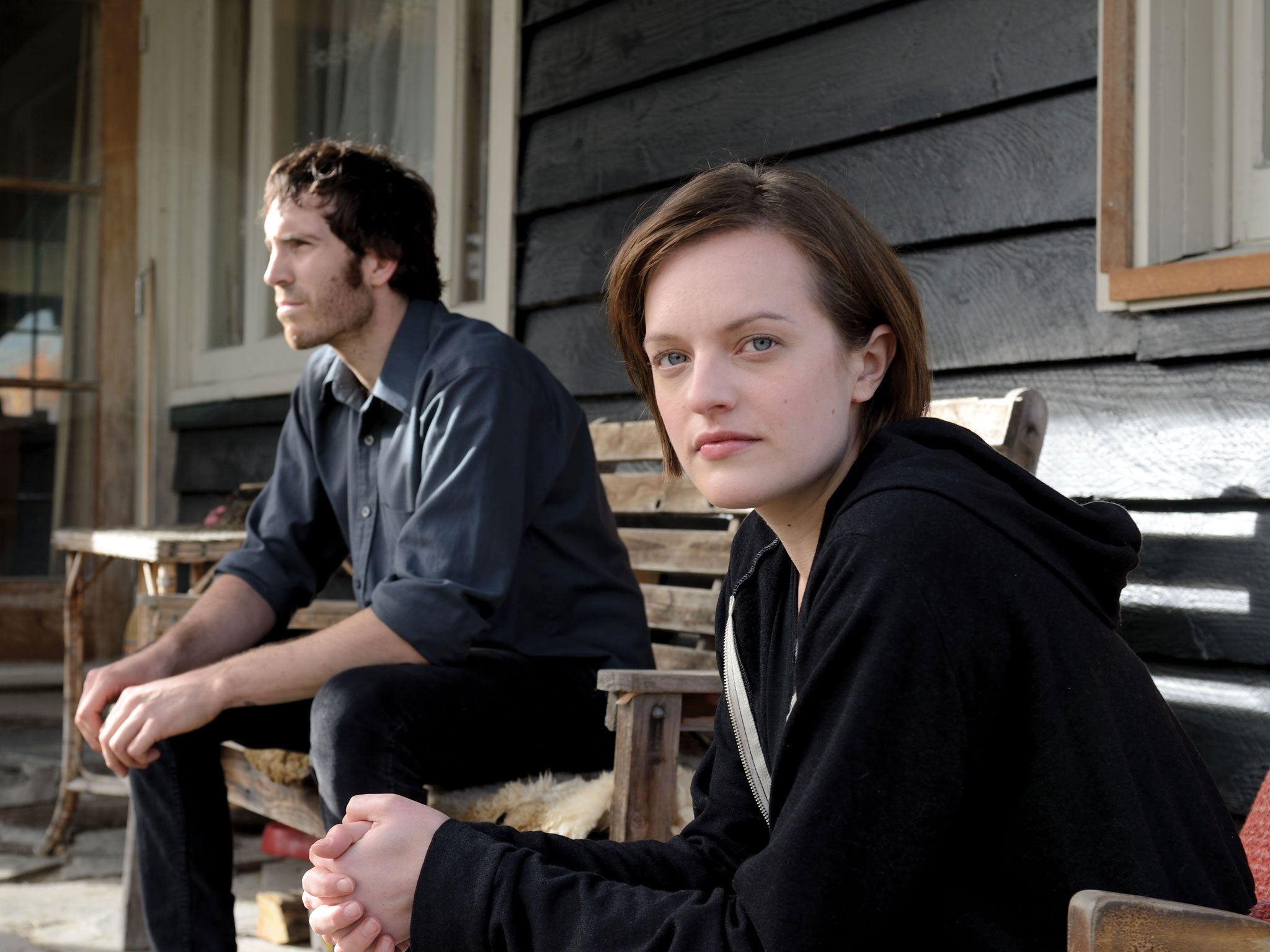Television review: Top of the Lake - who fancies a trip to the spooky lake?
Jane Campion’s dark new series opened with lovely scenery and a gob-smacking moment

If you watched Top of the Lake last night, I think I know the point at which you dropped your iPad and started paying attention. Two women are nattering in a shipping container plonked incongruously in the New Zealand mountains. Woman One: “Have you ever tried masturbating? It’s very relaxing and not fattening.” Woman Two: “I like penis.” Woman One: “Me too. I really like the ones that are bigger.”
It was an awkward and attention-grabbing, in a way that suggests the serial’s co-director and creator, the film-maker Jane Campion, might be hoping to jump the tramlines that well-appointed, big-budget serial dramas like to run along. Up until that moment, Top of the Lake was clattering along quite smoothly.
In short order, we watched as Robin (Elisabeth Moss) returns to the remote highland community of her upbringing and, as a police officer specialising in the handling of young abuse victims, becomes involved in the suspicious pregnancy of Tui, a young girl. The girl’s father is the local thug, Matt (Peter Mullan), who dislikes Robin’s attentions as much as he’s infuriated by the women’s commune, led by G J (Holly Hunter), which appears to have bought a spit of lakeside land for which he believes he had first refusal. There was violence, beautiful scenery and the suggestion of corruption by the local police.
Campion’s theme would appear to be the difference – or should that be the mile-wide chasm – between the sexes. The men of rural New Zealand may have cause to feel hard done by on this account. In his grotty compound, Matt shot a dog in the presence of Robin – a dog, he reassures her, that he really liked. The local police chief has a stag’s head over his desk and preened himself in the mirror as he discussed Tui’s case with Robin. Standard-issue redneck, then, with some local flavour (not even that in Mullan’s case; he seems to have been beamed in from Glasgow, accent and all).
Most of the women in the first episode seemed to be suffering at the hands of these men. They were saved from the rather meat-and-potato characterisation doled out to the male characters, by being, well, a bit odd – particularly those few we met on the commune. How would you respond to a very pissed off Peter Mullan, with large sons, loudly enquiring what you’re doing on his land? Probably not, as one woman did, by telling him that she is there to recover from a failed relationship with a chimpanzee.
Holly Hunter’s commune queen seems the counterpart to Matt – a gnomic straight-talker, with hair almost as long as she is, who may or may not have the best interests of her charges at heart. The few scenes among the commune inhabitants appeared to have been cut-and-pasted in from another, altogether more raw drama, but they are the ones that will keep me watching. Plus, it has a spooky lake, like The Returned – and I do love a spooky lake.
Anthony Wonke, the director of Piper Alpha: Fire in the Night, likewise decided to push at the boundaries of a genre, in his case that ungodly creation, the docudrama. The 1988 disaster claimed 167 of the 228 aboard the North Sea oil rig, and in its bloody wake, the industry spent billions of pounds implementing more than 100 safety procedures. Going by the hair-raising footage of the riggers at work in the heyday of the oil boom, health and safety stopped at a big moustache and eyes in the back of your head. The half-dozen or so survivors who provided their testimony of the hellish events of that night are tough men, whose direct accounts were as moving for what was omitted as for what was included.
Several recalled standing alongside “lads” –friends, colleagues, many with families –who were there one moment and then gone, vaporised in fires so hot the sea steamed beneath the rig. As far as it could, the programme recreated what their experience might have been like in sound and visual effects that were as eerily beautiful as they were terrifying. It was a gamble to play with these men’s most awful memories, and it paid off: the result was mesmerising.
One thing: we might be on the brink of another great energy boom with safety concerns, in the form of shale gas. As the credits rolled on Fire in the Night, it occured that this programme might interest all concerned. Just a thought.
Subscribe to Independent Premium to bookmark this article
Want to bookmark your favourite articles and stories to read or reference later? Start your Independent Premium subscription today.

Join our commenting forum
Join thought-provoking conversations, follow other Independent readers and see their replies